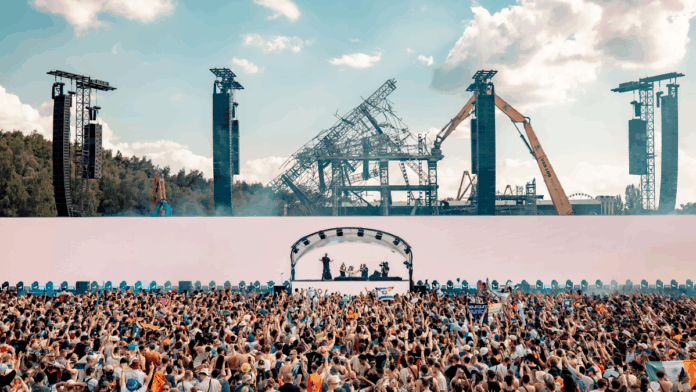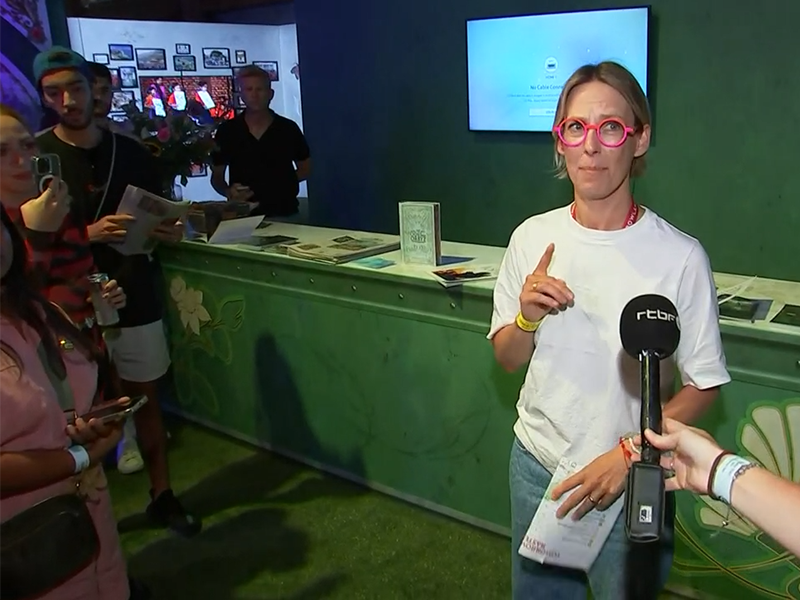A crisis before the crowd
Days before Tomorrowland 2025 welcomed its first festivalgoers, disaster struck. The main stage, the symbolic heart of the festival, caught fire during setup, sending plumes of smoke into the Belgian sky and shockwaves across social media. It was the ultimate test of Tomorrowland crisis communication. What followed was a textbook example of how to do it right.
It was the kind of crisis that could have unraveled months of preparation and decades of reputation. But instead, something remarkable happened: the Tomorrowland press team, led by Debby Wilmsen, stepped up with clarity, speed and purpose.
What to say…and when
I’ve worked alongside Wilmsen on Tomorrowland and TomorrowWorld-related coverage for more than a dozen years. I’ve also completed multiple crisis communication trainings through the U.S. Federal Emergency Management Agency (FEMA). FEMA trainings outline three core responsibilities for public information officers:
- Use plain language.
- Express empathy.
- Give the public clear, actionable instructions.
That third point is especially critical. In every FEMA training I’ve taken, the guidance is unambiguous: In a crisis, your first job is to tell people what to do next.
Not to speculate. Not to deflect. But to give direction.
And that’s exactly what Wilmsen and her team did.
This early clarity anchored Tomorrowland crisis communication efforts and helped control the narrative before speculation could take over.
Within hours, they delivered a message that was simple and stabilizing:
- DreamVille would open as scheduled.
- Ticket holders should continue their plans to attend.
- More information would follow as it became available.
That calm, proactive communication did more than just manage expectations. It held the festival community together at a moment when fear and rumors could have taken over. Instead of panic, there was poise. Instead of silence, there was steady reassurance.
Tomorrowland Crisis Communication in Action: From Fire to Rebuild
By the time attendees arrived, the rebuild was already underway. Behind the scenes, engineers and creatives were working around the clock. Just as important was the visible confidence from the communications team; a reminder that the show wasn’t just continuing, it was still being guided with intention.
This wasn’t just about public relations. It was about stewardship. And in the world of large-scale events, that distinction matters.
Too often, brands go dark during a crisis or release vague corporate statements that create more questions than answers. Tomorrowland showed what it looks like to meet a moment. They met it not with panic, but with professionalism.
And in doing so, it offered both a reassuring message to fans and a real-time case study for every publicist or festival comms lead watching.
Trust and Tomorrowland crisis communication built behind the scenes
There’s a reason people trust this festival. A huge part of that trust is earned not on stage, but behind the scenes by professionals like Wilmsen.
She understands that festivals aren’t just built on production value. They’re built on credibility. On relationships. On being present when it counts.
As someone who’s covered this scene for years — and as someone trained in how crisis messaging can go very wrong — I want to give credit where it’s due.
Wilmsen’s leadership elevated Tomorrowland crisis communication beyond damage control. It became a case study in fan-first messaging.
Tomorrowland may have lost a stage, but it didn’t lose its footing. That’s because the foundation wasn’t just wood and steel. It was communication, built with care.
At a festival built on drops and drama, it was the calm that saved the weekend.
André Walker is a journalist, video producer and FEMA-trained communications professional who has covered Tomorrowland and TomorrowWorld for over a decade.





